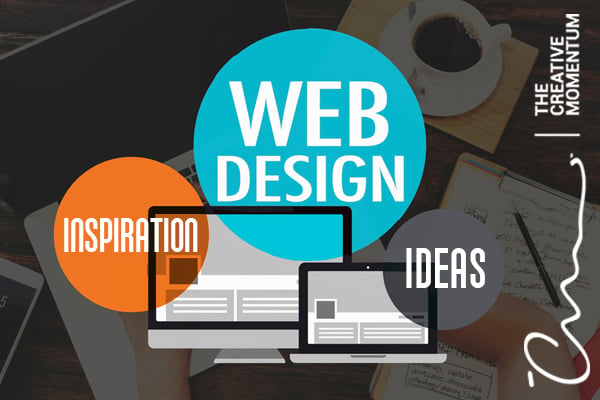Secret Advantages of Collaborating With a Full-Service Web Design Agency
Secret Advantages of Collaborating With a Full-Service Web Design Agency
Blog Article
A Comprehensive Overview to Best Practices in Website Design for Improved User Experience
In the realm of website design, comprehending individual requirements is extremely important for producing efficient electronic experiences. A well-structured approach that emphasizes receptive design, instinctive navigating, and a solid visual hierarchy can considerably enhance customer involvement. Furthermore, enhancing page load speed is crucial in meeting and going beyond individual assumptions. As we discover these best practices, it comes to be noticeable that each aspect plays a vital role in the general customer experience. However, the question remains: what particular methods can be applied to ensure these principles are perfectly integrated into your style process?
Understanding Customer Requirements
Understanding user demands is essential to effective website design, as it directly affects user experience and involvement. A comprehensive understanding of target market enables designers to develop sites that reverberate with individuals, fostering a feeling of connection and contentment (Web design agency). To accomplish this, designers need to participate in customer research, making use of methods such as studies, interviews, and use testing. This information collection provides understandings right into individual choices, behaviors, and discomfort factors.

Significance of Responsive Style
Responsive design is vital in today's electronic landscape, where customers accessibility internet sites throughout a myriad of gadgets with differing screen sizes. As mobile phone usage remains to rise, ensuring that a website provides an optimum watching experience on mobile phones, tablets, and desktops is essential. A receptive layout adjusts the design and content based upon the individual's gadget, allowing for smooth navigating and readability.
Additionally, responsive layout significantly impacts seo (SEO) Internet search engine, such as Google, focus on mobile-friendly sites in their ranking formulas. Consequently, a receptive site can improve visibility, leading to enhanced website traffic and customer involvement. Additionally, a consistent customer experience throughout tools builds brand name reputation and cultivates customer loyalty.
Additionally, carrying out receptive design can cause lowered development and maintenance prices. As opposed to creating several variations of an internet site for various devices, a single receptive website simplifies updates and content management. This effectiveness not just conserves time yet additionally ensures that users receive the most current info regardless of exactly how they access the website.
Simplifying Navigating

To accomplish streamlined navigating, web designers need to focus on a rational pecking order of content. Making use of detailed labels for food selection things can assist users recognize the function of each section at a glimpse. In addition, lessening the number of food selection products reduces cognitive lots, enabling users to concentrate on the most important elements of the site.
Including a search function is additionally valuable, as it supplies users with a straight route to certain content. Making certain that navigation components are consistent throughout the website cultivates experience and convenience of use. Responsive layout principles must additionally be related to navigating menus, guaranteeing they operate smoothly across all tools. Ultimately, simplified navigating not just improves customer fulfillment yet also adds to accomplishing more comprehensive business goals by raising conversion rates and minimizing bounce prices.
Enhancing Visual Hierarchy
How can developers produce a visual websites power structure that guides users via material seamlessly? The solution lies in the strategic use of style aspects that route interest and help with comprehension.
Moreover, the use of whitespace is crucial in developing breathing space around content. This not just prevents frustrating the user however additionally stresses crucial elements, making them stand out. Typography likewise plays a considerable duty; utilizing varying font style weights and styles can set apart between main and second details effectively.
Along with these techniques, aesthetic cues such as arrowheads or symbols can lead customers with the interface, strengthening the intended circulation of info. By attentively combining these aspects, developers can develop an engaging visual pecking order that improves customer experience, ensuring that vital web content is conveniently obtainable and understood. This careful orchestration of design aspects eventually promotes an extra instinctive communication with the internet site.
Maximizing Web Page Load Speed
In the fast-paced electronic landscape, maximizing page load speed has actually become a vital consider customer contentment and retention. Research shows that customers anticipate website to pack within two seconds; any delay yet limit can cause boosted bounce rates and reduced conversion chances.
To enhance load rate, beginning by decreasing HTTP demands, as each demand includes in the loading time. Utilize techniques click this such as CSS sprites to incorporate several pictures into one, reducing the variety of demands. Additionally, enhancing images through compression and making use of modern-day styles like WebP can dramatically reduce data sizes without endangering high quality.
Implementing browser caching additionally plays an important duty in improving page speed. By keeping often accessed data in your area on a customer's tool, succeeding gos to can pack nearly instantly. In addition, take into consideration leveraging Web content Delivery Networks (CDNs) to disperse material closer to users, minimizing latency.
Conclusion
Finally, efficient website design prioritizes user needs through meticulous research, fostering user-friendly and responsive interfaces. By simplifying navigating, boosting aesthetic power structure, and enhancing web page tons rate, designers create interesting and straightforward internet sites. Complying with these finest methods not only improves customer complete satisfaction but also grows commitment and raises general involvement. Inevitably, a dedication to these principles is important for developing effective digital experiences that satisfy the evolving assumptions of users in a competitive on-line landscape.
Report this page